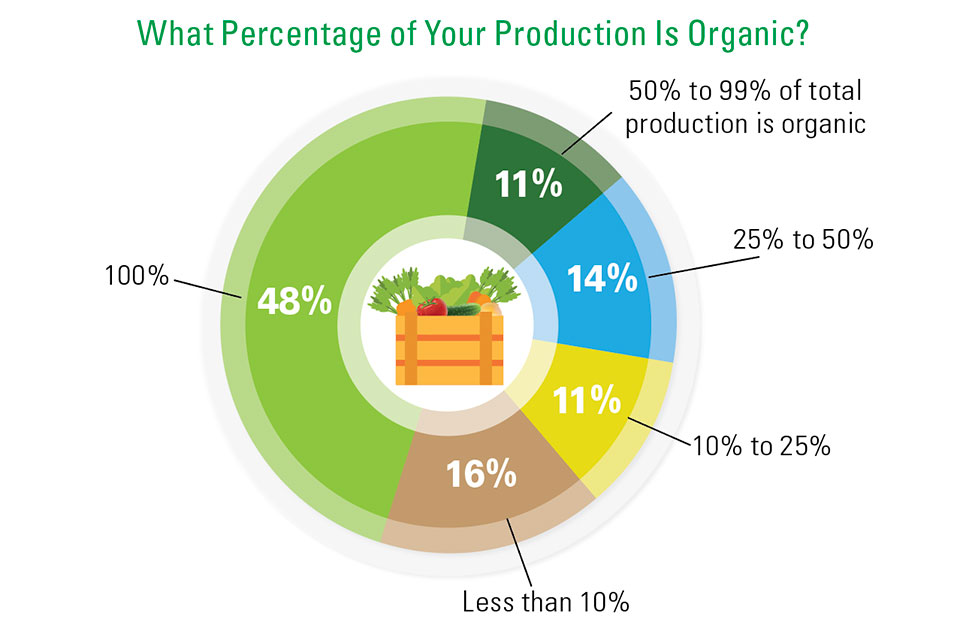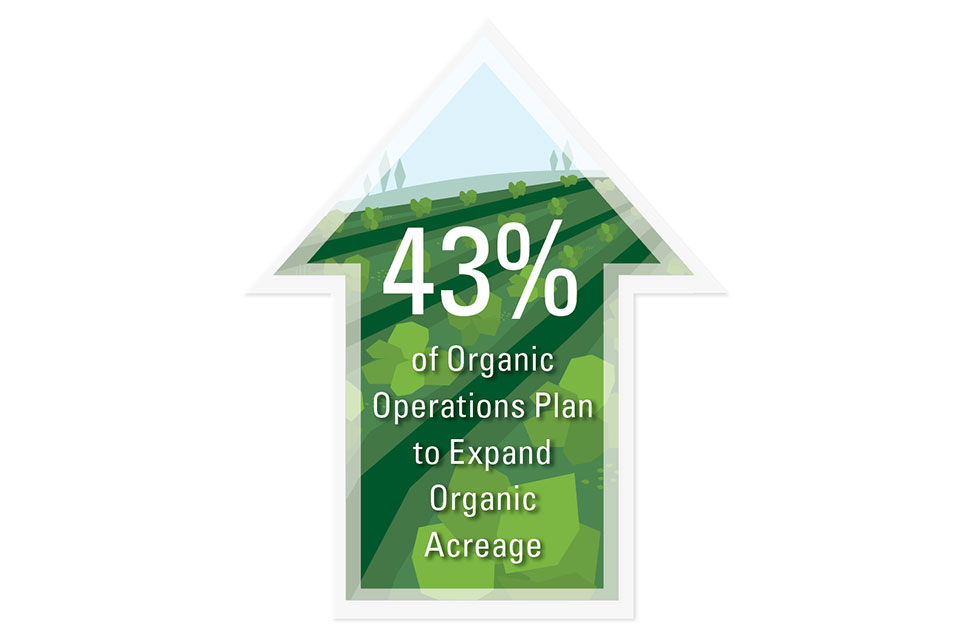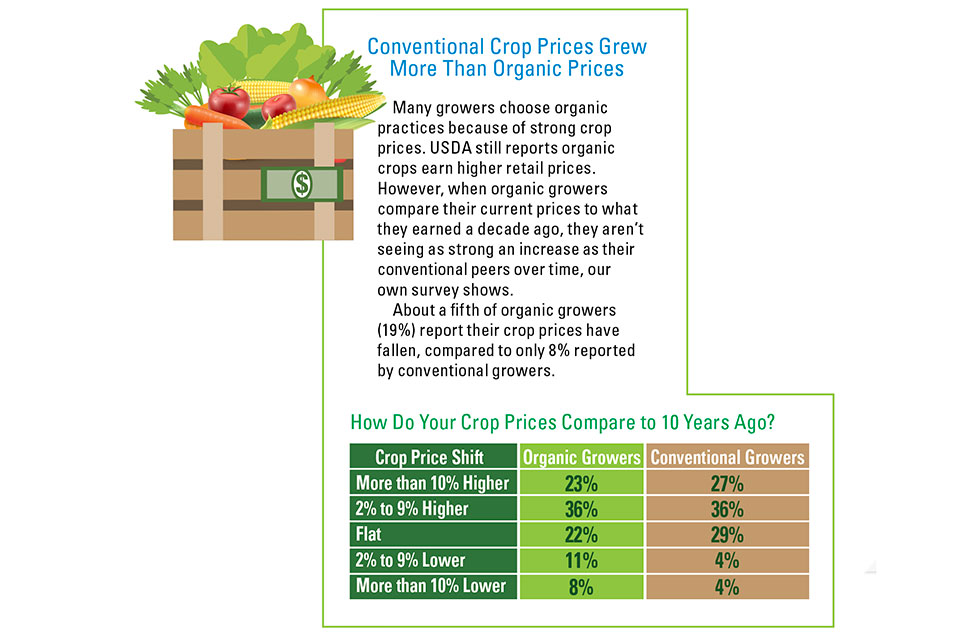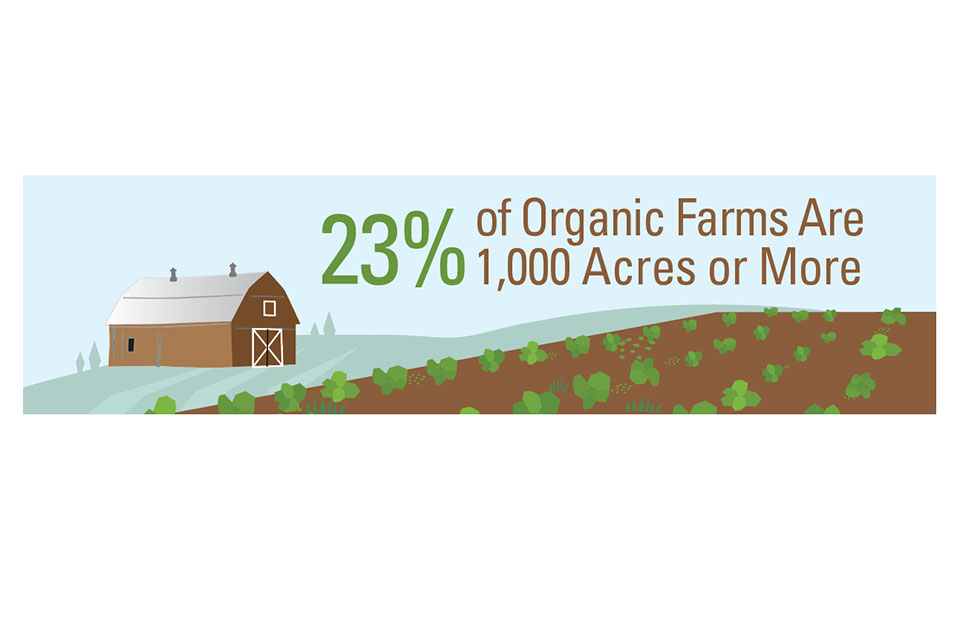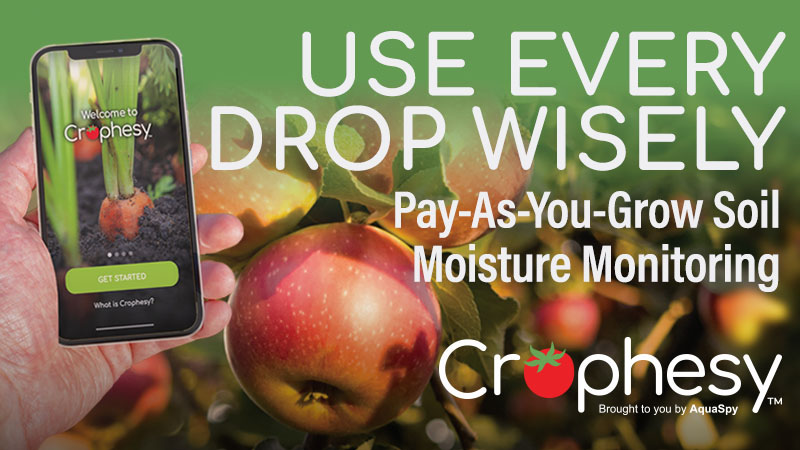Organic Vegetable Growers Planning for a Bigger Future [Infographics]
At heart, organic vegetable growers are optimistic. Producing organic crops commercially involves more up-front investment in labor and crop control with the hope of higher retail prices. Earning a healthy profit is delicate balance from year to year.
Here’s what you told us about how this past year fared through our annual 2020 State of the Vegetable Industry Survey.
Conventional Crop Prices Grew More Than Organic Prices
Many growers choose organic practices because of strong crop prices. USDA still reports organic crops earn higher retail prices. However, when organic growers compare their current prices to what they earned a decade ago, they aren’t seeing as strong an increase as their conventional peers over time, our own survey shows.
About a fifth of organic growers (19%) report their crop prices have fallen, compared to only 8% reported by conventional growers.
Pests Challenging Organic Growers More Than Convention Growers
Although all growers cited powdery mildew and downy mildew as a major challenge in 2019, organic growers struggled to control some pests much more than their conventional grower peers.
Organic Vegetable Growers Are Much More Likely to Grow Crops Under Contract
- 52% of Organic Growers
- 32% of Conventional Growers




